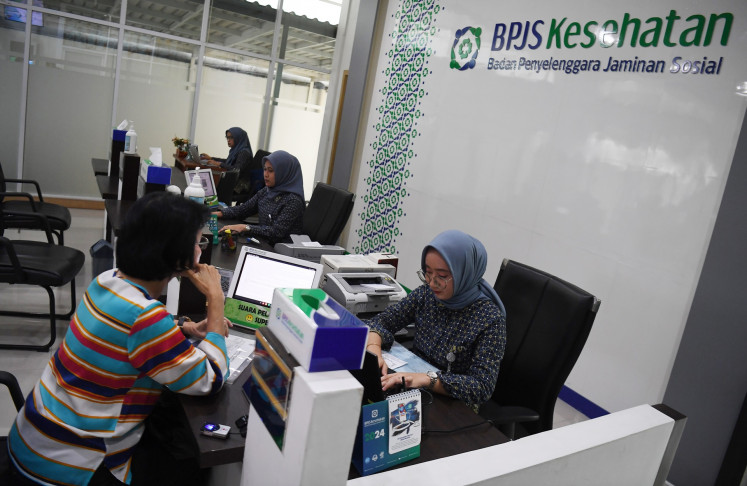Popular Reads
Top Results
Can't find what you're looking for?
View all search resultsPopular Reads
Top Results
Can't find what you're looking for?
View all search resultsTop priorities in ending child labor
Well over 2
Change text size
Gift Premium Articles
to Anyone
W
ell over 2.3 million Indonesian children between the ages of 7 and 14 are currently child workers. They cannot enjoy their basic rights such as the right to education, health care and leisure and recreational activities.
The Indonesian government is seeking to put an end to child labor practices by 2020 through the implementation of a child labor elimination program. The program will be implemented across 21 provinces and 89 cities or districts in Indonesia, with the assistance of 503 mentors in 366 shelters.
Child labor is certainly a universal phenomenon; it is not only prevalent in developing countries but also in developed countries.
The International Labor Organization (ILO) defines child labor as work that deprives children of their childhood, their potential and their dignity, and which is harmful to physical and mental development. It refers to work that is mentally, physically, socially or morally dangerous and harmful to children, that interferes with their schooling by depriving them of the opportunity to attend school, obliging them to leave school prematurely or requiring them to attempt to combine school attendance with excessively long and heavy work.
Child labor is found in various economic activities ranging from family-based agriculture and domestic service to small-scale industry.
Based on Article 3 of ILO Convention No. 182, the four worst forms of child labor are prioritized for elimination without delay.
First, all forms of slavery or practices similar to slavery, such as the sale and trafficking of children, debt bondage and serfdom and forced or compulsory labor, including forced or compulsory recruitment of children for use in armed conflict.
Second, the use, procuring or offering of a child for prostitution, for the production of pornography or for pornographic performances.
Third, the use, procuring or offering of a child for illicit activities, in particular for the production and trafficking of drugs as defined in the relevant international treaties.
Fourth, work which, by its nature or the circumstances in which it is carried out, is likely to harm the health, safety or morals of children.
Many believe one of the main causes of child labor is poverty. Studies reveal most child workers come from poor families, who cannot afford to meet their basic needs such as food, clothing and housing, let alone their children's education and healthcare.
Apart from that, many child workers come from broken homes due to divorce, death, remarriage or parental absence from home, which makes their domestic burden heavier. These factors force children into the world of work to support their family's economic needs.
At the same time, there are also children who decide to become child workers because they have been subjected to some form of neglect by their parents. Of course, their physical and emotional needs are not met and they do not feel loved, cared for or valued.
Regardless of the backgrounds and reasons behind their decisions to become child workers, the government must give its full attention, assistance and protection to them. This is essential to guarantee the fulfillment of their fundamental rights and to prevent their lives deteriorating further.
In tackling the problem of child labor, the preventive approach is considered the best option. This approach should focus on removing opportunities for children to plunge into the world of work that will deprive them of their full potential and hinder their physical and mental development.
In this regard, eradicating poverty, reducing unemployment, providing free, high-quality education, creating stable families and supportive neighborhoods and healthy surroundings should be the top priorities in precluding our children from becoming child workers.
_________________
Studies reveal most child workers come from poor families, who cannot afford to meet their basic needs such as food, clothing and housing.
___________________
The writer is a freelance columnist based in Cimahi, West Java










